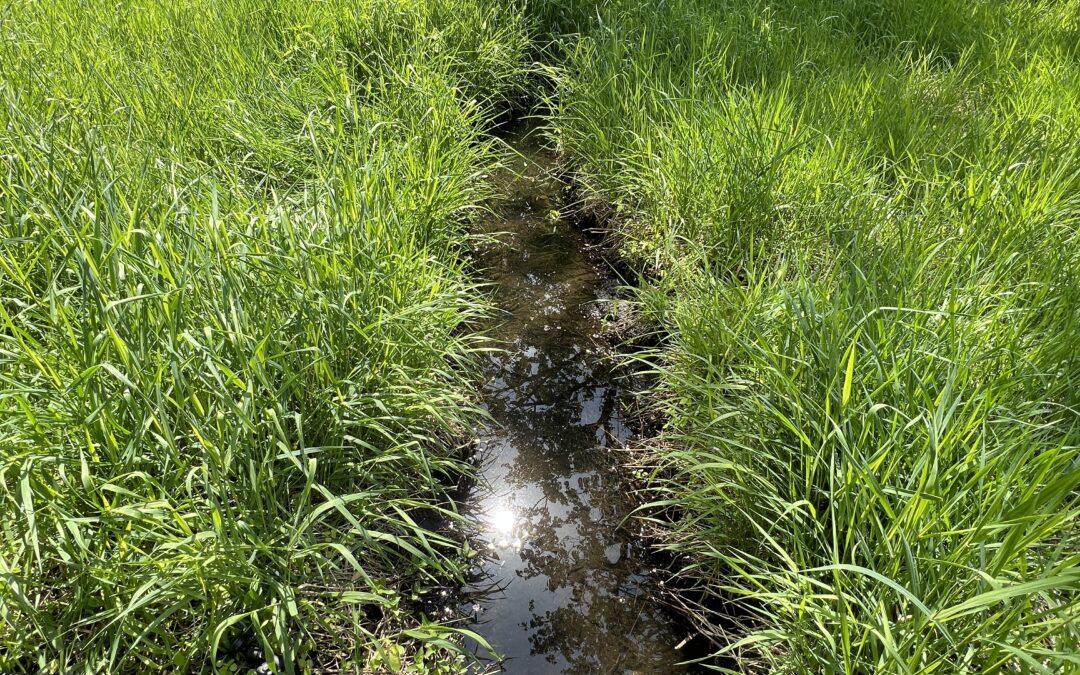At Midwest Wetland Improvements, our Stream Ecologists are on the ground and in the water—restoring and protecting stream systems across the Upper Midwest. Whether it’s assessing a rural headwater ravine or overseeing a perched culvert replacement in an urban stream, our team combines scientific expertise with practical field experience to bring degraded waterways back to life.
Restoration in Motion
MWI stream ecologists are embedded in project teams that include wetland scientists, engineers, and landscape architects. Together, we take on a range of restoration challenges, from fish passage and dam removals, to channel remeanders and mitigation banking. Every project is unique, but each shares a common thread: using nature-based solutions to restore function and resilience to water systems that have been degraded by time, infrastructure, or land use.
Early Starts and Stream Gear
Most days begin early, around 7:00 a.m., especially when we’re traveling to project sites scattered across the Upper Midwest. Our team often carpools to collaborate on the day’s goals and reduce environmental impact. We load up on essentials: waders, survey rods, GPS units, flow meters, water quality kits, field notebooks, and safety gear—along with plenty of coffee and lunch for long hours outdoors.
Stream ecologists at MWI are in the field year-round. Even in winter, you’ll find us conducting topographic surveys, inspecting in-progress construction, or documenting watershed conditions for stream modeling and design refinement.
Field-Focused Restoration Work
Field work drives our process. Each site visit brings a new opportunity to understand how a stream functions—and how it can be improved. Stream ecologists lead geomorphic surveys, collect habitat and flow data, and assess bank stability and erosion risks. We’re often working alongside contractors during active restoration and construction, ensuring that designs are correctly implemented and that field changes align with ecological goals.
A typical field day could include:
- Surveying stream profiles and cross-sections
- Measuring flow rates and assessing channel hydraulics
- Monitoring active construction sites for compliance with design specifications
- Documenting riparian vegetation conditions and species surveys
- Coordinating with engineers, regulators, and landowners onsite
Translating Field Data into Stream Designs
Back in the office, Stream Ecologists analyze field data and help develop technical design documents. We draft grading plans, write construction notes, and collaborate with other team members on planting plans and hydraulic models. We also prepare stream mitigation documentation, permit applications, and post-project monitoring reports.
Communication is key. We participate in planning meetings, work closely with agency reviewers, and update clients on progress and performance. The field and office work go hand-in-hand to ensure that each project is not only ecologically sound but also buildable and sustainable.
Restoration That Makes a Difference
Working at Midwest Wetland Improvements means combining technical expertise with environmental restoration that has real, measurable outcomes. Stream Ecologists help stabilize streams, improve water quality, and reconnect aquatic habitat for fish and wildlife. Every site is a chance to improve a watershed and support communities across the region.
Thinking About a Future in Stream Restoration?
We’re always looking for passionate professionals to join our team. If you have experience in stream ecology, environmental science, fluvial geomorphology, or related fields—and want to work on real-world projects that restore and protect water resources—reach out to us. A career at MWI means fieldwork, collaboration, and making a difference across the landscapes we all depend on.


Recent Comments